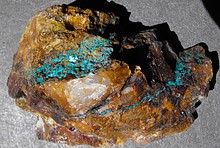Learning CenterWhat is a mineral?The most common minerals on earthInformation for EducatorsMindat ArticlesThe ElementsThe Rock H. Currier Digital LibraryGeologic Time
搜索矿物的性质搜索矿物的化学Advanced Locality Search随意显示任何一 种矿物Random Locality使用minID搜索邻近产地Search Articles搜索词汇表更多搜索选项
╳Discussions
💬 Home🔎 Search📅 LatestGroups
EducationOpen discussion area.Fakes & FraudsOpen discussion area.Field CollectingOpen discussion area.FossilsOpen discussion area.Gems and GemologyOpen discussion area.GeneralOpen discussion area.How to ContributeOpen discussion area.Identity HelpOpen discussion area.Improving Mindat.orgOpen discussion area.LocalitiesOpen discussion area.Lost and Stolen SpecimensOpen discussion area.MarketplaceOpen discussion area.MeteoritesOpen discussion area.Mindat ProductsOpen discussion area.Mineral ExchangesOpen discussion area.Mineral PhotographyOpen discussion area.Mineral ShowsOpen discussion area.Mineralogical ClassificationOpen discussion area.Mineralogy CourseOpen discussion area.MineralsOpen discussion area.Minerals and MuseumsOpen discussion area.PhotosOpen discussion area.Techniques for CollectorsOpen discussion area.The Rock H. Currier Digital LibraryOpen discussion area.UV MineralsOpen discussion area.Recent Images in Discussions
Identity HelpCould this be epidote?

19th Feb 2012 18:39 UTCMathias Stålek
This is probably a rather basic question.
Could this green mineral be epidote?
There is not much sign of cleavage but it could be because it rather fine grained.
Hardness 6-7
Density 2.96 g/cm3 but this is average and some parts are quartz and feldspar so the green mineral is heavier.
The origin is a metamorphic iron ore.
Thanks.
Regards, Mathias

19th Feb 2012 19:15 UTCSigurd Stordal
19th Feb 2012 19:30 UTCPaul Brandes 🌟 Manager
Your specimen looks like a piece of basalt that has been "epidotised" during burial metamorphism. The hardness fits, as does the specific gravity. It is not derived from the metamorphism of iron ore.
Curiously, where was this found??
19th Feb 2012 20:06 UTCUwe Kolitsch Manager

20th Feb 2012 06:47 UTCMathias Stålek
It was found on the mine dump of a closed iron mine in Idkerberget. It's a small town in Dalarna province in Sweden. I can't find the locality on Mindat. I don't know much much more of the geological settings.
I guess it's derived for metamorphism of feldspar.
20th Feb 2012 07:56 UTCChristian Auer 🌟 Expert
20th Feb 2012 11:28 UTCPeter Nancarrow 🌟 Expert
I agree with the others that your specimen looks most likely to be massive epidote.
However, regarding your observation that " . . . I can't find the locality on Mindat . . .". There are many known mineral localities not listed on Mindat. It would not be reasonable to attempt to list every known spot where massive material of very abundant rock-forming minerals such as quartz, calcite, epidote, the common feldspars, pyroxenes, micas, garnets, clay minerals, etc can be found. That would involve listing every outcrop - every mountain crag, coastal rock, stream bed, gravel pit, road cutting etc in the world!
For very common minerals, it has to be a matter of judgement regarding such features as unusual crystallisation (e.g. exceptional crystal size, colour, or rare habit), an unusual paragenesis, economic importance, etc. as to whether a particular occurrence is of sufficient interest to be worth registering as a Mindat locality.
Having said all that, my view is that any mine site is worth registering, since that would qualify the locality in terms of being an "economically important deposit"!
Pete N.




版权所有© mindat.org1993年至2024年,除了规定的地方。 Mindat.org全赖于全球数千个以上成员和支持者们的参与。
隐私政策 - 条款和条款细则 - 联络我们 - Report a bug/vulnerability Current server date and time: 2024.4.19 22:21:00
隐私政策 - 条款和条款细则 - 联络我们 - Report a bug/vulnerability Current server date and time: 2024.4.19 22:21:00











